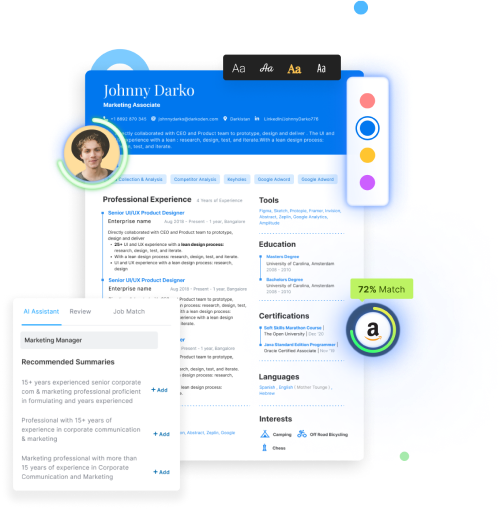Career centers have a lot going on - things like resume reviews, interview prep and networking events are not even the tip of the iceberg.
Sadly, just 16% of graduates say their career services were very helpful. The gap isn’t effort - it’s approach.
Students don’t just need advice - they need structured coaching frameworks that build confidence, clarify career paths, and lead to real job offers.
Without a clear, research-backed strategy, even the best career advice can feel vague or ineffective.
The good news? The right approach changes everything.
Here are 5 coaching models that can elevate your career center and equip students with the clarity and confidence they need to navigate their careers successfully.
1. Strengths-Based Coaching (Gallup CliftonStrengths Framework)
Many students focus on what they lack - experience, skills, connections rather than what they naturally do well.
Strengths-based coaching flips this mindset, helping students identify and leverage their top talents instead of trying to fix weaknesses.
How You Can Incorporate It:
- Offer CliftonStrengths assessments as part of career exploration workshops.
- Help students map their strengths to potential career paths using real-world job descriptions.
- Encourage students to tailor their resumes and LinkedIn profiles based on their top strengths.
Pro Tip: Run group coaching sessions where students share how they’ve used their strengths in academic or formal settings. Peer insights often reinforce self-awareness and confidence.
Also Read: How to build strong employer partnerships for career treks?
2. The GROW Model (Goal-Setting Framework for Career Planning)
Many students struggle with career decisions because they don’t have a clear action plan.
The GROW model, widely used in executive coaching, provides a simple but effective framework to guide students from uncertainty to action.
How You Can Incorporate It:
- Train career advisors to use the GROW framework in one-on-one coaching sessions.
- Implement career roadmap worksheets where students write down their goals, current situation, possible actions, and commitments.
- Use this method in career bootcamps where students set short-term and long-term career goals.
Pro Tip: Follow up with students after goal-setting sessions to track their progress. Accountability dramatically improves goal completion rates.
Also Read: Is Hiration a Better Big Interview Alternative for Career Centers?
3. Design Thinking for Career Exploration
The traditional career model - pick a major, get a job - doesn’t fit today’s dynamic job market.
Design thinking, pioneered at Stanford’s d.school, takes a more flexible, iterative approach to career planning.
How You Can Incorporate It:
- Guide students through career ideation workshops, where they brainstorm multiple career paths based on their interests and skills.
- Encourage students to prototype careers by doing short-term projects, internships, or informational interviews before committing to a long-term career path.
- Integrate design thinking exercises into career courses, allowing students to test and refine career choices.
Pro Tip: Encourage students to document their career experiments - even failed ones - so they can track what works and refine their path based on real experiences.
Also Read: How to combat counselor burnout with AI?

4. Motivational Interviewing (MI) for Career Decision-Making
Some students feel stuck - unsure whether to follow their major’s typical career path or explore something new.
Motivational Interviewing (MI) helps them break through indecision by focusing on their own motivations.
How You Can Incorporate It:
- Train career counselors in reflective listening techniques to help students uncover their own career motivations.
- Use MI principles in career advising sessions, asking open-ended questions that prompt students to reflect on their career values.
- Develop a career confidence journal, where students write down their thoughts on career options and decision-making roadblocks.
Pro Tip: When students say, “I’m not sure what I want to do,” avoid giving direct advice. Instead, ask, “What excites you about the options you’ve considered?” This approach encourages deeper reflection and commitment.
Also Read: What are some great ways to boost student engagement in career treks?
5. AI-Powered Coaching for Scalable Career Services
Career centers often struggle with high student-to-counselor ratios, making personalized coaching difficult. AI-powered tools can scale career guidance without sacrificing quality.
How You Can Incorporate It:
- Use AI-powered resume review tools to provide instant feedback on student resumes.
- Offer AI-driven mock interviews so students can practice interview skills anytime.
- Implement chatbots that answer common career questions, freeing up career counselors for more complex student needs.
Also Read: Why are Career Treks important for Career Exploration?
Final Thoughts
Career coaching isn’t just about helping students find jobs- it’s about empowering them with the right frameworks to navigate their careers with confidence.
By integrating strengths-based coaching, goal-setting frameworks, design thinking, motivational interviewing, and AI-powered tools, career centers can significantly improve student outcomes.
If you’re looking to scale career coaching efficiently, Hiration offers AI-powered solutions to automate resume reviews, mock interviews, and LinkedIn optimization, ensuring every student gets personalized guidance.
Book your free demo today to see how AI can enhance your career services.



